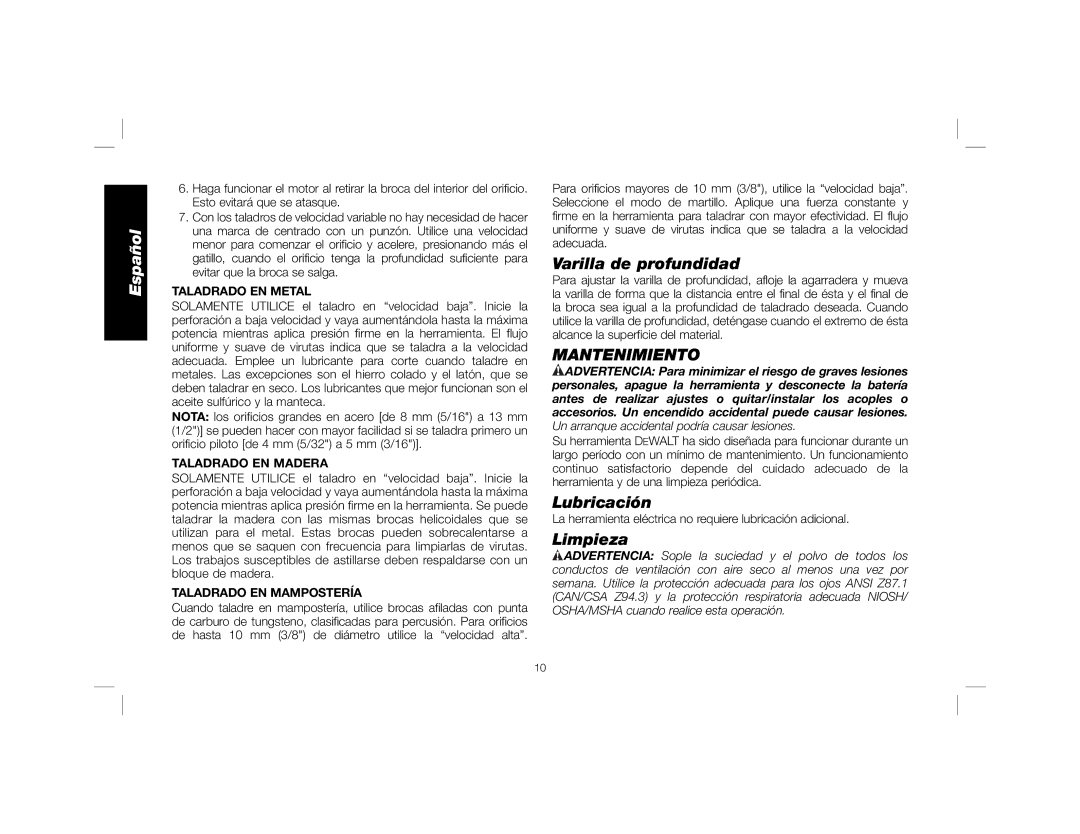DW515K, DW505 specifications
The DeWalt DW505 and DW515K are two power-packed tools designed to meet the needs of both professional tradespeople and DIY enthusiasts. Built for performance and durability, these hammer drills are perfect for a variety of applications, from drilling into concrete to driving screws into tough materials.The DeWalt DW505 is a versatile, 7.8-amp hammer drill, featuring a two-speed gearbox that allows users to operate at speeds of 0-1,100 and 0-3,000 RPM. This ranges of speed is ideal for a diverse range of projects. The DW505's variable-speed trigger enables better control over the drilling process, while the 1/2-inch ratcheting keyless chuck ensures secure bit retention, making bit changes fast and easy.
Key technologies in the DW505 include an impact mechanism that provides powerful hammering action, making it possible to drill into tougher materials such as masonry. Its ergonomic design ensures user comfort during extended use, while the side handle provides added control, making this drill suitable for heavy-duty tasks.
On the other hand, the DeWalt DW515K is a 1/2-inch reversible hammer drill kit, designed to excel in both drilling and chiseling tasks. With a power output of 8.0 amps and a considerable impact energy, the DW515K stands out in terms of perforation capabilities. Its dual-mode operation allows it to transition from rotary drilling to hammer drilling effortlessly. This flexibility is essential for tackling a variety of materials, including wood, metal, and concrete.
The DW515K also incorporates a keyless chuck that simplifies bit changes, making it convenient for work applications where time is of the essence. Additionally, the drill features rubber overmold grips for increased comfort and control, ensuring that fatigue is minimized even during rigorous jobs.
Both models are built with durability in mind, featuring high-quality materials that can withstand the rigors of demanding job sites. The compact design of the DW505 and DW515K makes them easy to maneuver in tight spaces, while their robust construction enhances their reliability for long-term use.
In summary, the DeWalt DW505 and DW515K hammer drills stand out due to their powerful performance, versatile features, and user-friendly designs. From contractors to DIY enthusiasts, these tools deliver the reliability and efficiency needed for any drilling task.

